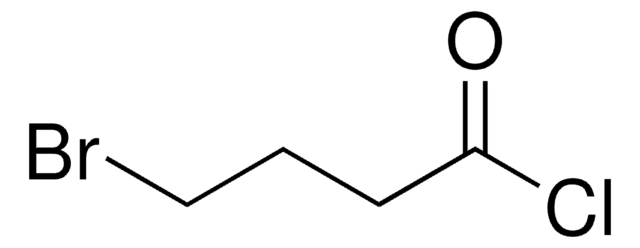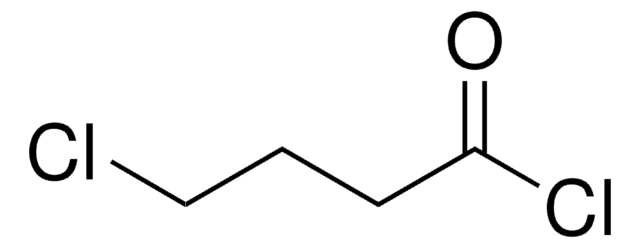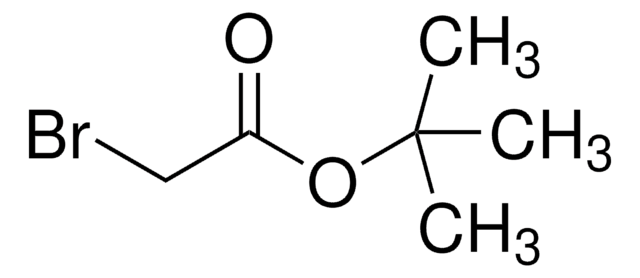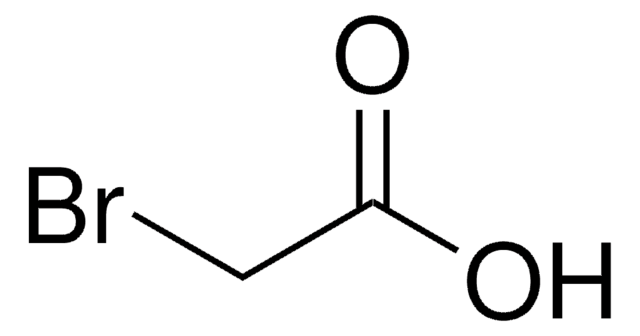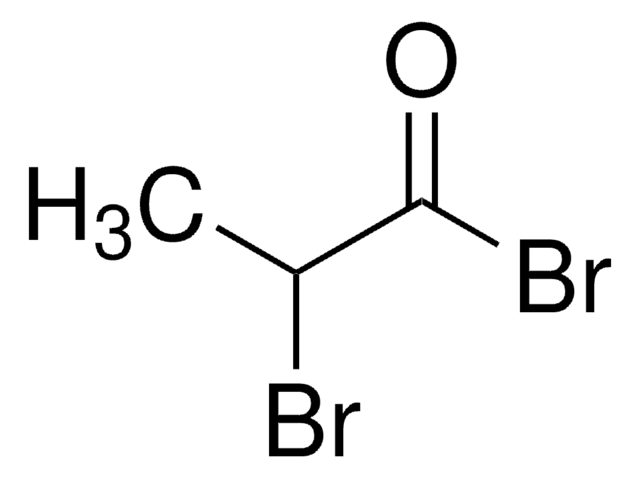16120
Bromoacetyl chloride
≥95% (GC)
Sinónimos:
2-Bromo-1-chloro-ethanal, 2-Bromoacetyl chloride
About This Item
Productos recomendados
Nivel de calidad
Ensayo
≥95% (GC)
índice de refracción
n20/D 1.495
bp
127-128 °C (lit.)
densidad
1.89 g/mL at 20 °C
grupo funcional
acyl chloride
bromo
temp. de almacenamiento
2-8°C
cadena SMILES
ClC(=O)CBr
InChI
1S/C2H2BrClO/c3-1-2(4)5/h1H2
Clave InChI
SYZRZLUNWVNNNV-UHFFFAOYSA-N
¿Está buscando productos similares? Visita Guía de comparación de productos
Descripción general
Aplicación
Palabra de señalización
Danger
Frases de peligro
Consejos de prudencia
Clasificaciones de peligro
Skin Corr. 1B - STOT SE 3
Órganos de actuación
Respiratory system
Riesgos supl.
Código de clase de almacenamiento
8A - Combustible corrosive hazardous materials
Clase de riesgo para el agua (WGK)
WGK 3
Punto de inflamabilidad (°F)
Not applicable
Punto de inflamabilidad (°C)
Not applicable
Equipo de protección personal
Faceshields, Gloves, Goggles, type ABEK (EN14387) respirator filter
Elija entre una de las versiones más recientes:
¿Ya tiene este producto?
Encuentre la documentación para los productos que ha comprado recientemente en la Biblioteca de documentos.
Los clientes también vieron
Nuestro equipo de científicos tiene experiencia en todas las áreas de investigación: Ciencias de la vida, Ciencia de los materiales, Síntesis química, Cromatografía, Analítica y muchas otras.
Póngase en contacto con el Servicio técnico


